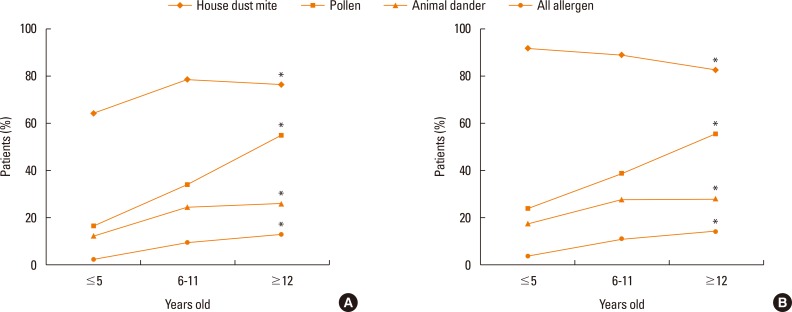Fig. 4. Change of the prevalence of allergen sensitization in AR patients. (A) This graph contains all cases, including NAR and non-test groups. Types of sensitized allergens vary according to the ages of the children. For house dust mites, 64.1% of children ≤5 years old are sensitized and there is a plateau of the sensitized rate at 6-11 years old (P<0.05). The percentage sensitized to pollen rapidly increases in patients ≥12 years old (16.6% to 54.9%) (P<0.050). The number sensitive to animal dander gradually increases at 6-11 years old (P<0.05). There is an increase in the number of all-allergen sensitized patients from ≤5 years old to ≥12 years old (P<0.050). (B) This graph only includes the AR group. Types of sensitized allergens varies according to the ages of the children. For house dust mites, 91.9% of patients ≤5 years old are sensitized. The number then significantly decreases to 82.6% for patients ≥12 years old (P<0.050). The number of patients sensitized to pollen swiftly increases to 55.5% among those ≥12 years old (P<0.050). There is also an increase in numbers for sensitivity to animal dander, but the percentage reaches a plateau at 6-11 years old (P<0.05). The number of all-allergen sensitized patients increases from ≤5 years old to ≥12 years old (P<0.050).
*P<0.005.

